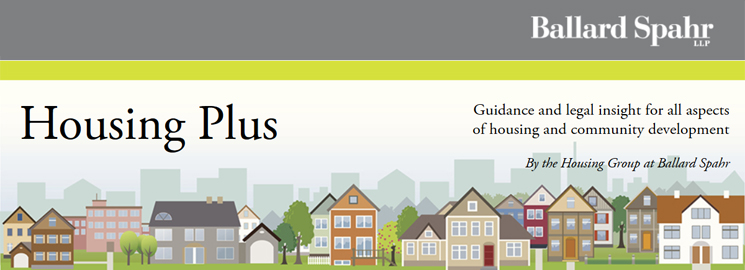
 According to a report released in December, 2013 by the Joint Center for Housing Studies of Harvard University, an extreme shortgage of affordable housing is available within the United States for low-income renters. To illustrate the problem, the Harvard report indicates that in 2011, “11.8 million renters with extremely low incomes (less than 30 percent of area median income, or about $19,000 nationally) competed for just 6.9 million rentals affordable at that income cutoff – a shortfall of 4.9 million units.” To make matters worse, the Harvard report points out that of those 6.9 million affordable rentals, approximately 2.6 million are occupied by higher income households. Despite the shortage of affordable housing, factors such as high construction costs, the rising cost of low-income housing tax credits and the difficulty of obtaining CRA credits, among others, have made it difficult for the supply of affordable housing units to keep up with the demand. See e.g. americanbanker.com In order to to help alleviate the shortage of affordable housing in the country, the Harvard report states that two things must occur: a reduction of regulatory barriers to construction of rental housing and greater incentives to invest in existing affordable housing.
According to a report released in December, 2013 by the Joint Center for Housing Studies of Harvard University, an extreme shortgage of affordable housing is available within the United States for low-income renters. To illustrate the problem, the Harvard report indicates that in 2011, “11.8 million renters with extremely low incomes (less than 30 percent of area median income, or about $19,000 nationally) competed for just 6.9 million rentals affordable at that income cutoff – a shortfall of 4.9 million units.” To make matters worse, the Harvard report points out that of those 6.9 million affordable rentals, approximately 2.6 million are occupied by higher income households. Despite the shortage of affordable housing, factors such as high construction costs, the rising cost of low-income housing tax credits and the difficulty of obtaining CRA credits, among others, have made it difficult for the supply of affordable housing units to keep up with the demand. See e.g. americanbanker.com In order to to help alleviate the shortage of affordable housing in the country, the Harvard report states that two things must occur: a reduction of regulatory barriers to construction of rental housing and greater incentives to invest in existing affordable housing.
Reducing Regulatory Barriers
The Harvard report indicates that one possible approach to lowering the costs of new construction would be to “reduce regulatory constraints on certain types of housing.” This could include allowing higher-density construction to economize land costs, permitting smaller unit sizes or easing requirements for parking or other amenities. Some jurisdictions instead of reducing regulatory contraints have put requirements or incentives in place to include more affordable housing in larger developments. A recent article from the Citizen-Times, for instance, indicated that a city council in North Carolina discussed the possiblity of requiring housing developers to include a certain percentage of affordable units in any new project. In addition, the Harvard report highlighted the need to keep exisiting rental properties in good condition. In order to do this, the Harvard report suggests that rehabilitation of existing properties should not have to meet the same building standards as new construction projects as long as any relaxation of land use regulations and building codes does not affect the safety of residents and limit the costs imposed on surrounding communities.
Greater Incentives for Investment
More generous tax breaks for maintenance and improvements or exemption from certain local building code requirements and allowing for the rehabilitation of rental properties in ways that are cost effective are a couple of the incentives the Harvard report proposes. In addition to these, however, the Harvard report stresses that public subsidies are essential for households with incomes too low to cover the costs of operating those rental units. The Harvard report states that according to HUD estimates, less than one fourth (23.8%) of very-low income renter households received housing assistance in 2011 which was down from 27.4% in 2007. This is due, in large part, to reduced funding of housing assistance programs. While an increase in funding of existing housing assistance programs would help alleviate the shortgage of affordable housing in the country, the Harvard report also advocates for making more efficient use of existing resources by using those resources to “help address the underlying causes of economic instability, connecting recipients to communities, services, and supports that create a pathway to self-sufficiency.”
I found the suggestions and reasoning set forth in the Harvard report sound and informative, but wonder who will step up and lead the nation through what many people have called the affordable housing crisis. I believe it will take the cooperation of many and that it may require as Lizabeth Cohen suggests in a recent keynote address, greater confidence in government and the public sector.